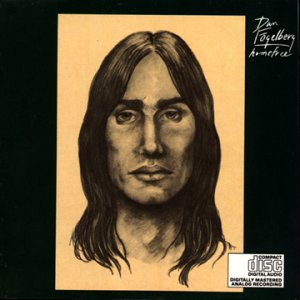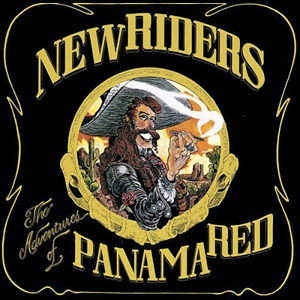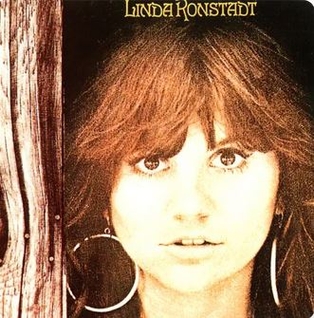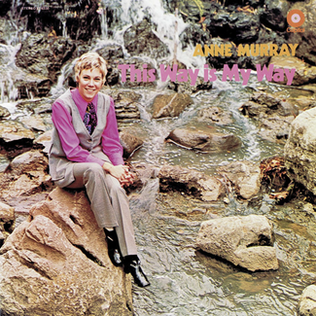
Ian & Sylvia were a Canadian folk and country music duo which consisted of Ian and Sylvia Tyson. They began performing together in 1959, married in 1964, and divorced and stopped performing together in 1975.

Ian Dawson Tyson was a Canadian singer-songwriter who wrote several folk songs, including "Four Strong Winds" and "Someday Soon", and performed with partner Sylvia Tyson as the duo Ian & Sylvia.

Home Free is the debut album by American singer-songwriter Dan Fogelberg, released in 1972. Upon its original release, Home Free had lukewarm success, but following a later reissue, it was certified platinum by the RIAA for certified sales of 1,000,000 copies.

"Wait" is a song by the English rock band the Beatles from their 1965 album Rubber Soul. The song is credited to the Lennon–McCartney partnership. In the 1997 book Many Years from Now, Paul McCartney recalls it as entirely his work. In a 1970 interview with Ray Connolly, John Lennon could not remember writing it, saying, "That must be one of Paul's."

The Adventures of Panama Red is the fourth country rock album by the New Riders of the Purple Sage, released in 1973. It is widely regarded as one of the group's best efforts, and reached number 55 on the Billboard charts.
Area Code 615 was an American country rock band from Nashville, active in the late 1960s and early 1970s, taking their name from the telephone area code, which at the time covered all of Central and Eastern Tennessee. The band was made up of session musicians, recording only two albums before resuming normal session work. Several of the members were backing musicians for Bob Dylan's Blonde on Blonde and Nashville Skyline albums plus recordings by Billy Swan and The Monkees.

Who Knows Where the Time Goes is the seventh studio album by American singer and songwriter Judy Collins, released by Elektra Records in 1968. It peaked at No. 29 on the Billboard 200 charts.
Great Speckled Bird was a country rock group formed in 1969 by the Canadian musical duo Ian & Sylvia. Ian Tyson sang, played guitar and composed. Sylvia Tyson sang, composed and occasionally played piano. The other founding members were Amos Garrett on guitar and occasional vocals, Ben Keith on steel guitar, Ken Kalmusky on bass and Ricky Marcus on drums. They were named after the song, "The Great Speckled Bird", as recorded by Roy Acuff (1938).

Ken Kalmusky was a Canadian bassist from Stratford, Ontario. He worked with some of the top names in the music industry, including Ronnie Hawkins, Ian and Sylvia, Jerry Reed, Amos Garrett, and Todd Rundgren. Kalmusky was a session musician and toured the world, playing stages from Massey Hall, to The Grand Ole Opry.
Amos Garrett is an American-Canadian blues and blues-rock musician, guitarist, singer, composer, and musical arranger. He has written instructional books about music and guitar. Garrett holds dual citizenship and was raised in Toronto and Montreal. He is best known for his guitar solo on Maria Muldaur's recording "Midnight at the Oasis". He has written books about music, such as "Amos Garrett—Stringbending: A Master Class".

Stages is an album by folk rock musician Eric Andersen. The album was recorded in late 1972 and early 1973, as the intended follow-up to Andersen's successful Blue River album, but before it could be released, the master tapes were somehow lost in the Columbia vaults. It wasn't until 1990 that the tapes were discovered, at which time the album was finally released. In addition to the original 1972–73 recordings, Andersen included three newly recorded songs. Guest musicians from the 1973–73 sessions included Leon Russell on organ, piano and guitar, Rick Danko on bass and background vocals, and Garth Hudson on accordion, with Dan Fogelberg and Joan Baez supplying background vocals. Shawn Colvin was a guest vocalist on the 1990 sessions.

Linda Ronstadt is the third solo studio album by Linda Ronstadt, released in early 1972 on the Capitol Records label. The album was a sales failure, prompting Linda's exit from Capitol Records. It peaked at number 163 on Billboard's Pop Album Chart and at number 35 on Billboard's Country Album Chart. It is considered to be a front-runner in the country rock music genre.
Norman D. Smart is an American drummer.

This Way Is My Way is the second studio album by Canadian country pop artist Anne Murray and was released in 1969 on Capitol Records. Initially the album was available only in Canada. It was later made available in the U.S after Murray's chart success there in the 1970s. The album included recordings of songs by Eric Andersen, Gene MacLellan, and Bob Dylan. A single release of "Snowbird" was issued in the U.S. in 1970, where it reached the top ten and started Murray's career there. The album peaked at No.13 on the Canadian RPM album chart on 20 February 1971.

The Hills of Indiana is a 1971 album by Lonnie Mack. The album marked a divergence from Mack's previous recordings by focusing on country rock and roots rock instead of blues rock and rhythm and blues.
Buddy Cage was an American pedal steel guitarist, best known as a longtime member of the New Riders of the Purple Sage.

Amazing Grace: His Greatest Sacred Performances is a two-disc compilation of studio master recordings by Elvis Presley, released in 1994 on RCA Records and certified double platinum by the RIAA on July 15, 1999. The release also includes a booklet with session details and an essay by Charles Wolfe.
"Someday Soon" is a song composed by Canadian singer-songwriter Ian Tyson who recorded the song with Sylvia Fricker as the duo Ian & Sylvia in 1963. Cited by Richie Unterberger of Allmusic as "clearly point[ing] toward [its writer's] future C&W/cowboy direction", "Someday Soon" would be brought to prominence via a 1968 recording by Judy Collins, and subsequently recorded by a number of artists primarily in the country and western field. In 2010 "Someday Soon" was honored by the Western Writers of America as one of the "Top 100 Western Songs" of all time.

"Bluebird" is a song recorded by the American rock group Buffalo Springfield. It was written and produced by Stephen Stills, with co-production by Ahmet Ertegun. In June 1967, Atco Records released it as a single to follow-up their hit "For What It's Worth" (1966).

Close is a solo album by American rock musician Sean Bonniwell, credited under the moniker T. S. Bonniwell, who had been the creative force behind the innovative garage rock band The Music Machine. The album was released on August 4, 1969, by Capitol Records. It marked a total departure from Bonniwell's rebellious protopunk period with The Music Machine, to a soft rock crooning style. In addition, the album blended folk rock and orchestrated influences, and was inspired by Bonniwell's stints in the pre-Music Machine groups, the Wayfarers and the Ragamuffins, along with his desire to be more poetically inclined. The song,"Where Am I to Go", was released as a single ahead of the album, but failed to chart. Like its attendant single, Close was also somewhat commercially unsuccessful, and was the last recording by Bonniwell for the next 20 years.













